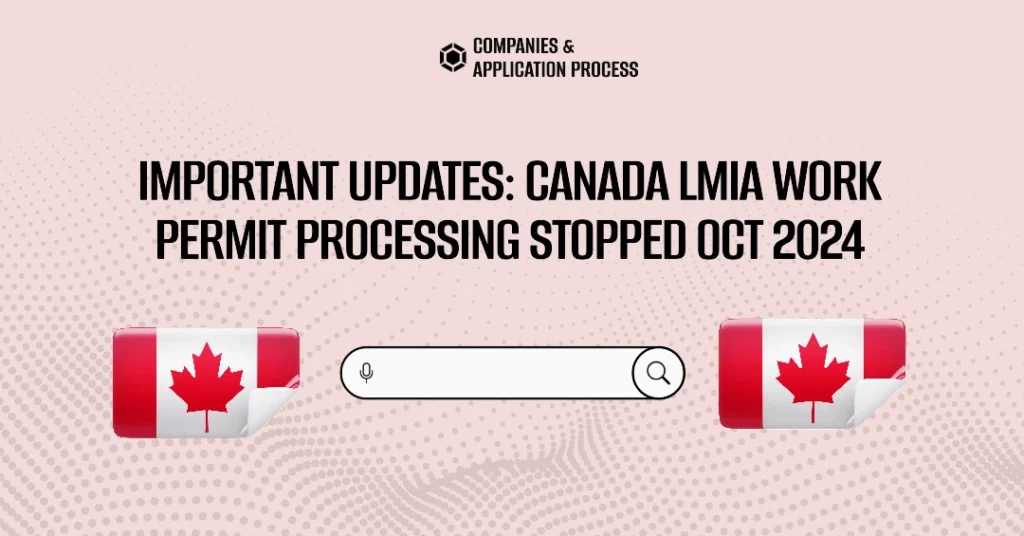Canada has recently implemented substantial changes to its Labor Market Impact Assessment (LMIA) regulations, marking a strategic response to the country’s evolving economic landscape. These updates are designed to address labor gaps while prioritizing employment opportunities for Canadians. This article explores the new regulations, their significance, and their implications for the Temporary Foreign Worker (TFW) Program.
Table of Contents
Introduction to the New LMIA Regulations
On September 26, 2024, the Canadian government officially rolled out new LMIA regulations following their announcement on August 26. The primary objective of these changes is to reduce the country’s reliance on foreign labor and ensure that Canadian workers are prioritized, particularly in metropolitan areas where unemployment rates exceed 6%. Understanding these regulations is crucial for both employers navigating the LMIA process and foreign workers seeking job opportunities in Canada. Below, we break down the key changes and their implications.
Key Changes to the Temporary Foreign Worker Program
1. Suspension of LMIAs in High-Unemployment Areas
A significant revision in the new regulations is the suspension of LMIA processing for the low-wage stream in areas with high unemployment. In census metropolitan regions where unemployment is at least 6%, employers can no longer use the LMIA process to hire low-wage temporary foreign workers, with a few critical exceptions.
Industries Exempt from Suspension
Certain vital sectors, such as primary agriculture, food processing, fish processing, construction, and healthcare, are exempt from this suspension. The government recognizes that these industries face significant worker shortages that cannot be filled solely by the Canadian labor force. This exemption allows continued hiring of foreign workers under the LMIA process, despite high local unemployment rates.
2. Cap on Foreign Workers Reduced to 10%
Another crucial change involves the reduction of the cap on foreign workers. Previously, employers could hire up to 20% of their workforce through the TFW program, but this has now been limited to 10%. This reduction aims to curb reliance on foreign labor.
Sector-Specific Exceptions
Industries such as agriculture, food processing, healthcare, and construction retain exemptions from this reduced cap. These exceptions acknowledge that certain sectors heavily rely on foreign labor due to the limited availability of skilled local workers, ensuring their operational viability.
3. Reduction in Employment Duration for Low-Wage Workers
The maximum employment duration for foreign workers hired through the low-wage stream has been reduced from two years to one year. This change encourages employers to seek more permanent solutions for their labor needs, such as investing in local talent.
Impact on Workers
For foreign workers, this shift means less job security and the necessity to reapply or find new employment sooner. Workers must now strategize their stay in Canada, exploring pathways to permanent residency or higher-wage positions that offer more extended employment terms.

Previous Changes to Address LMIA Fraud
The September changes build on regulations introduced in August 2024, which aimed to combat fraud and misuse of the LMIA process. The Canadian government has increased its vigilance to ensure the TFW program is not exploited to replace Canadian workers or take advantage of foreign workers.
Strengthening Program Integrity
On August 6, 2024, stricter regulations were established to enhance the integrity of the TFW program. These regulations are intended to fill genuine labor shortages while preventing employers from overly relying on foreign labor.
20% Cap Enforcement
The enforcement of a 20% cap on low-wage foreign workers in an employer’s workforce was a crucial step to prevent overreliance on foreign labor. This policy has been expanded with the September changes to further restrict foreign worker numbers, showcasing the government’s commitment to increasing job opportunities for Canadian citizens and permanent residents.
Enhanced Oversight and Monitoring
To ensure compliance, the government has intensified monitoring and inspections, particularly in high-risk sectors. This enhanced oversight helps prevent employers from using the TFW program as a loophole to avoid hiring local workers.
Impact on Employers
Employers must now be prepared for more frequent and rigorous inspections. They need to maintain detailed records of their hiring practices and demonstrate substantial efforts to hire Canadians before seeking foreign workers.
Increased LMIA Fees
To deter misuse of the LMIA process, the government is considering increasing LMIA fees. This fee increase aims to cover the costs associated with processing assessments and discourage frivolous applications. By making the application process more costly, the government hopes to reduce the number of unnecessary or fraudulent applications, ensuring that only genuine labor shortages are addressed.
Sector-Specific Exceptions and Changes to Existing LMIA Applications
Recent changes also include sector-specific exceptions, particularly regarding the processing of LMIAs in Quebec. The province has received a temporary halt in LMIA processing for work offers below the average hourly rate of $27.40, affecting low-wage job approvals in Montreal. This suspension underscores the government’s intention to prioritize local labor.
Why These Exceptions Matter
These exceptions are essential as they recognize that each region and industry in Canada faces unique challenges. Allowing certain sectors to continue hiring foreign workers ensures that businesses remain operational and competitive while contributing to the Canadian economy without compromising opportunities for local workers.
Canada Implement New Rules for Post-Graduation Work Permits Eligibility Criteria
Top LMIA-Approved Jobs in Canada October 2024: Leading Companies & Application Process
IRCC Caregiver Pilot Programs 2024: Eligibility & Application Process
Express Entry Draws October 2024: IRCC Issues 2,113 PR Invitations in Latest Draws
IRCC Extends Public Policy for Immigration Medical Examination Exemptions until 2029
The Road Ahead for Canada’s LMIA and TFW Program
Ensuring Fair Use of the TFW Program
The recent LMIA changes underscore Canada’s commitment to ensuring that the Temporary Foreign Worker Program effectively bridges short-term labor gaps while prioritizing Canadian workers. By enforcing stricter rules, increasing oversight, and reducing reliance on foreign labor, the government aims to create a balanced job market.
Future Evaluations
A comprehensive evaluation of the TFW program is scheduled within the next sixty days, focusing on the high-wage stream. This review may lead to further adjustments that refine the program’s scope, aligning it with Canada’s evolving economic needs.
Adapting to Economic Changes
With Canada’s unemployment rate reaching 6.6% as of August 2024, the LMIA changes represent a broader effort to adapt to economic fluctuations. The government’s goal is to balance addressing genuine labor shortages while ensuring that Canadian workers are not displaced by temporary foreign labor.
Key Takeaway for Employers and Workers
For employers, staying informed about these changes and complying with the new regulations is crucial to avoid penalties. Foreign workers must also understand the evolving landscape to navigate their opportunities effectively. Being proactive and well-informed will be key to leveraging these changes for both employers and potential immigrants.
The recent changes to Canada’s LMIA regulations signify the government’s ongoing effort to adapt immigration policies to changing economic realities. These adjustments have significant implications for both employers and foreign workers, highlighting the importance of compliance and prioritizing Canadian workers. For those navigating the LMIA process—whether as an employer or a foreign worker—staying informed about these changes is essential to understand their ramifications.
Canada’s commitment to fostering a fair and balanced job market while addressing labor shortages through the TFW program reflects a nuanced approach to economic growth. By adapting to new regulations and remaining informed, both employers and workers can position themselves for success in the evolving Canadian job market.


Leave a Reply